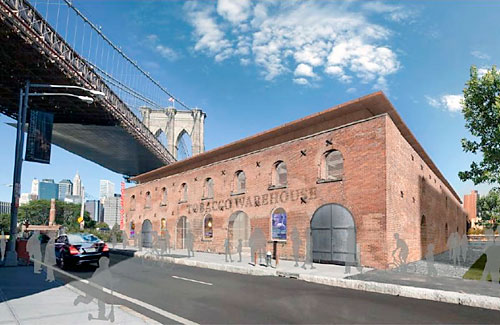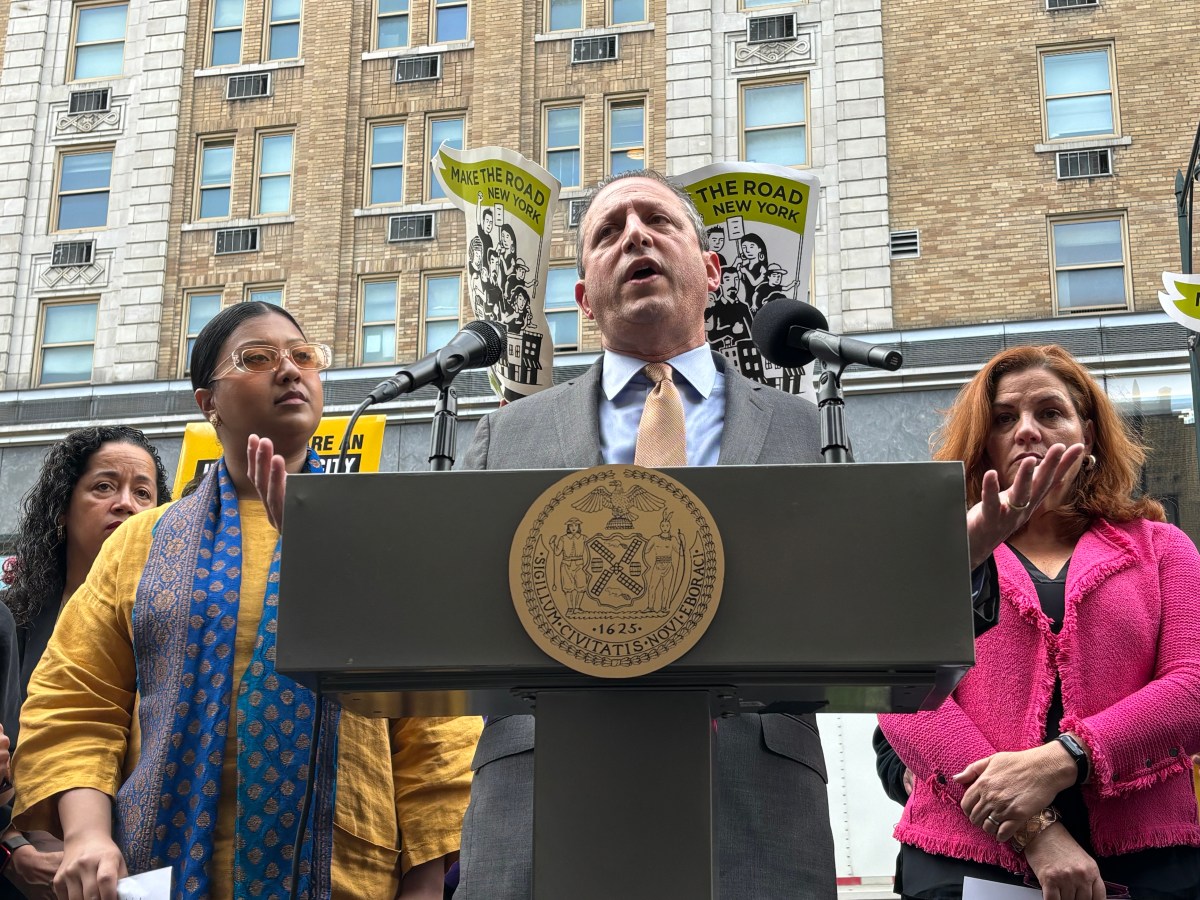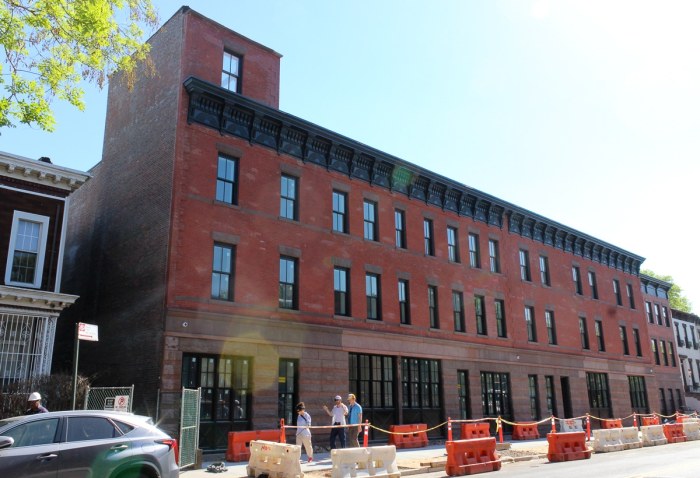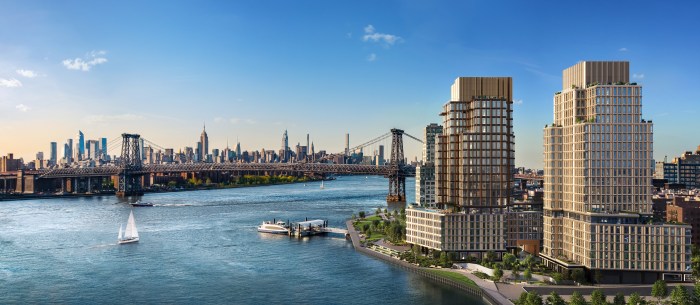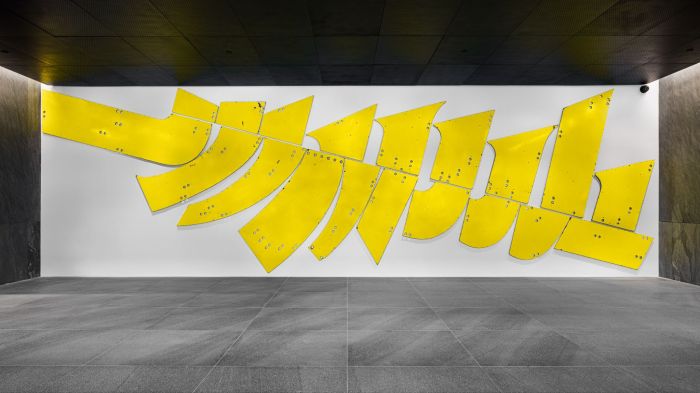A federal judge has temporarily blocked a plan to turn the historic Tobacco Warehouse inside Brooklyn Bridge Park into an arts center run by the St. Ann’s Warehouse theater troupe.
In granting a preliminary injunction, Judge Eric Vitaliano ruled that the National Park Service violated federal law by demapping the Civil War-era warehouse and its neighboring Empire Stores warehouse from federally protected parkland.
The ruling responded to a lawsuit filed by the New York Landmarks Conservancy, the National Trust for Historic Preservation, and the Brooklyn Heights and Fulton Ferry Landing associations that claimed the park service capitulated to pressure from the Bloomberg administration, which wanted to turn the property over to St. Ann’s.
The lawsuit claims that the state lied to feds about the location of the building so that it would no longer be part of the federally protected parkland of Empire–Fulton Ferry State Park — and that the National Parks Service skirted its review duties by not questioning a state assertion that nobody used the site even though it actually has a long history of community support, funding and repair.
“This ruling reaches far beyond Brooklyn,” Peg Breen, president of the New York Landmarks Conservancy, said on Sunday. “If the National Park Service could choose when to enforce the law, historic buildings and parks across the country would suffer.”
The National Park Service said it could not comment until there is a final ruling, and a spokesman for St. Ann’s Warehouse said that the company would have no comment. But in February, the Park Service had said that it did nothing wrong in 2009, when it allowed the state to redraw the map of the Brooklyn waterfront to place the two historic buildings on non-parkland so they could be redeveloped. The agency said it was merely correcting an earlier “mistake” that put the buildings in the protected parkland in the first place.
The next year, the world-renowned theater troupe St. Ann’s Warehouse was given development rights to convert the crumbling and roofless building into a $15-million mixed-use performance hall and plaza.
Opponents said that the feds simply buckled to pressure from state and city authorities who were intent on giving the site to St. Ann’s, and needed a secretly redrawn map.
“It’s clear that the National Park Service — an agency charged with protecting our public parkland — has reneged on this duty and has yielded to political pressure from City Hall,” said Jane McGroarty, president of the Brooklyn Heights Association. “These ‘back room’ deals [should] not rob the public of what is rightfully theirs.”
Vitaliano, at least preliminarily, agreed.
The Park Service’s contention that it was merely correcting a historic mistake is nothing but a “house of cards” that “cannot withstand the gentlest breeze,” the judge wrote, because the historic record “contains not the slightest hint of a mistake.”
Vitaliano suggested a motive for the Park Service’s alleged shenaningans: if the agency had demapped the structures using proper procedures, that conversion would require the state to provide substitute parkland elsewhere.
City lawyer Haley Stein said that Bloomberg adminisration officials “are disappointed with the ruling and look forward to presenting our full case to the court.”
“Brooklyn Bridge Park remains committed to moving the Tobacco Warehouse project forward and incorporating plans for St. Ann’s Warehouse and Empire Stores as vibrant parts of the park,” Stein added.
But some locals think the city is overly optimistic. Former Community Board 2 member Andrew Stengel, who wrote the seminal law review article in January that led to the lawsuit, saw the decision in larger context.
“The era of unchecked land use decisions in the vein of Robert Moses is long over,” said Stengel.


